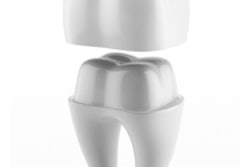
Dentists who take a conservative approach to placing restorations tend to stay conservative when replacing or repairing them. And dentists who aggressively treat primary caries also stick with their preferred strategy when assessing existing restorations.
But majorities were lacking among decisions dentists made about the repair and placement of restorations, according to a study presented during a poster session at the recent American Association for Dental Research (AADR) annual meeting in Tampa, FL.
"In contrast to the consistency of an individual practitioner-investigator's treatment planning approach, there was considerable variation among practitioner-investigators in their treatment recommendations on the same teeth," noted researchers from the Dental Practice-Based Research Network (DPBRN) Collaborative Group.
“There is not a unanimous or even a majority opinion about when they should place the initial restoration for primary caries.”
— Tim Heaven, DDS
Only 43% of DPBRN dentists surveyed had the same response to a clinical scenario that required the replacement or repair of a restoration. And one majority, 54%, surfaced in dentists' responses to the appropriate threshold for the placement of initial restorations in low-risk patients.
There was more agreement for high-risk patients, however: 68% agreed upon the treatment for proximal primary caries.
"In our study, there is barely a majority opinion among dentists about when they should place the initial restoration for primary caries for low-risk patients," Tim Heaven, DDS, chair of the faculty senate at the University of Alabama at Birmingham School of Dentistry and the study's lead researcher, said during an interview with DrBicuspid.com. "For secondary caries, replacements, and repairs, there's even more of a difference of opinion."
Dr. Heaven and his colleagues set out to describe and quantify decision-making among practitioners for primary caries and existing restorations. Another goal was to "estimate concordance between the restorative thresholds for primary and proximal caries and existing restorations," the researchers wrote.
Five patient scenarios
To do so, hypothetical clinical scenarios were sent to 961 DPBRN dentists in Alabama, Mississippi, Georgia, Florida, Minnesota, and Oregon; a total of 565 participated in the study, although 57 were excluded from the final analysis.
Those surveyed were presented with five separate low- and high-risk patient scenarios:
- The restoration of primary occlusal caries
- The restoration of primary proximal caries
- Three scenarios requiring the repair or complete replacement of existing restorations
"We looked at treatment of primary occlusal and proximal caries and also repair and replacement of existing restorations that were somewhat questionable," Dr. Heaven explained.
They then quantified the probability that dentists who recommended restorative intervention for primary caries (occlusal and proximal) at deeper lesion depths were the same ones who recommended that existing restorations be repaired instead of replaced entirely.
Lesion depths had a significant impact on the decision to restore occlusal and proximal caries, they found. There was more agreement among the surveyed dentists for high-risk patients; 68% responded the same way for proximal primary caries. However, the responses were all over the board for low-risk patients.
|
In addition, there was a complete lack of a majority response to repair and replacement treatment routes.
|
The researchers also noted patterns in the dentists' decisions.
"We found that if the practitioner was willing to wait longer before they placed an initial restoration in the tooth, they also tended to repair more restorations," Dr. Heaven said. "Also, those who treated primary caries earlier tended to replace more restorations entirely."
The differences, which were statistically significant (p < 0.05), arose for both high- and low-risk scenarios, the researchers noted. These findings have implications for how best to focus interventions designed to improve routine clinical practice, they concluded.
Dr. Heaven believes that a change in the way dentists approach restoration decisions needs to take place.
"There is not a unanimous or even a majority opinion about when they should place the initial restoration for primary caries," he said. "We need to do more work and figure out some criteria that stand up to evidence that we gather through dental practice research."



















